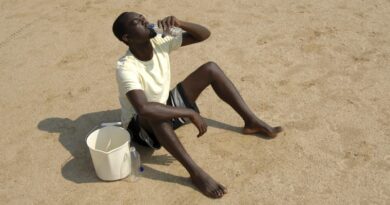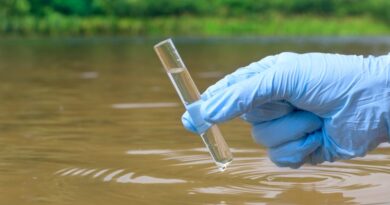Companies, investors urged to set meaningful targets to mitigate, manage water-related risks

Faced with dwindling water supplies across the globe, companies and investors are getting increasingly concerned about the water risks faced by their operations, supply chains and investments. At the same time, they are on the lookout for tools that could help them to assess these water-related risks.
Global environment NGO WWF and the World Business Council for Sustainable Development (WBCSD) have jointly published a new report in consultation with WRI that seeks to provide an overview of the three leading water tools available for corporate water risk assessment, including one particularly focused on India.
The recently launched report – Right Tool for the Job: Tools and Approaches for Companies and Investors to Assess Water Risks and Shared Water Challenges – provides guidance for companies and investors to assess water risks and shared water challenges.
After a water risk assessment, companies should set meaningful targets to mitigate and manage the risks, implement innovative solutions, raise awareness among their stakeholders and advocate raising the industry standards for water use, the report suggests.
These water tools were developed for the private sector to provide a comprehensive understanding of water risks, for businesses and investments to grow and for communities and freshwater systems to thrive. They are all freely accessible and built on peer-reviewed data.
Now, as the COVID-19 pandemic spreads throughout the world, it is increasingly clear that public health depends on universal access to water. The current situation has heightened our awareness of and need to respond to systemic risks like water that have the potential to impact so many facets of society and our economy. Now is the time to take urgent action on environmental issues like water.
The risks that water imposes on a business have been broadly and globally recognized for a long time and have become a key aspect of major disclosure initiatives as investor concerns have grown. Understanding waters risks and incorporating them into business strategy is critical for companies to secure their license to operate as well as ensure profitability and resilience. Recognizing these risks is also critical for investors to make sound investment decisions.
Over the past decade, many water tools have emerged but this has created some confusion around both the concept of water risk assessment and the differences or similarities between these water tools.
In response to a demand from businesses and financial institutions to understand shared water challenges and risks, WBCSD in 2007, followed by the World Resources Institute (WRI) in 2011 and WWF in 2012, developed some tools to assess water risks.
Over the past eight years, there have been significant changes in these tools as well as shifts in the process of water risk assessments. Both WRI’s and WWF’s tools have evolved considerably with different functionalities. In parallel, WBCSD decommissioned its Global Water Tool in 2019 while continuing to develop its India Water Tool.
The latest report compares the water tools and provides guidance on the tools in relation to a user’s needs and priorities. Additionally, the report offers recommendations on conducting robust water risk assessment and understanding shared challenges.
“Corporate water risk assessment is the first step to water stewardship and is indeed the most important one. This report is an effort to bring together the work of leading organizations on water tools, so corporates and investors can make decisions based on the best available data and using tools that are best suited to their needs and priorities”, said WBCSD Director (Water) Tom Williams.
The three tools offer varied insights on water challenges and risks as they each draw upon different data sources, spatial resolutions and have different functionalities.
A robust water risk assessment requires corporate water users to understand the underlying frameworks and functionalities of each tool as well as how they overlap, and nuances in the results offered by each tool. Water risk tools often need to be augmented with local or regional data and expert knowledge as well, said WBCSD.
“Context is at the heart of water and accordingly, understanding both the status of water, and water risks, is critical. This collaborative effort responds to the user community and aims to help companies more easily navigate the landscape of tools. It offers clear, consistent messages about our complementary tools and how they can be used to strengthen water stewardship”, said WWF’s Global Water Stewardship Lead Alexis Morgan.



